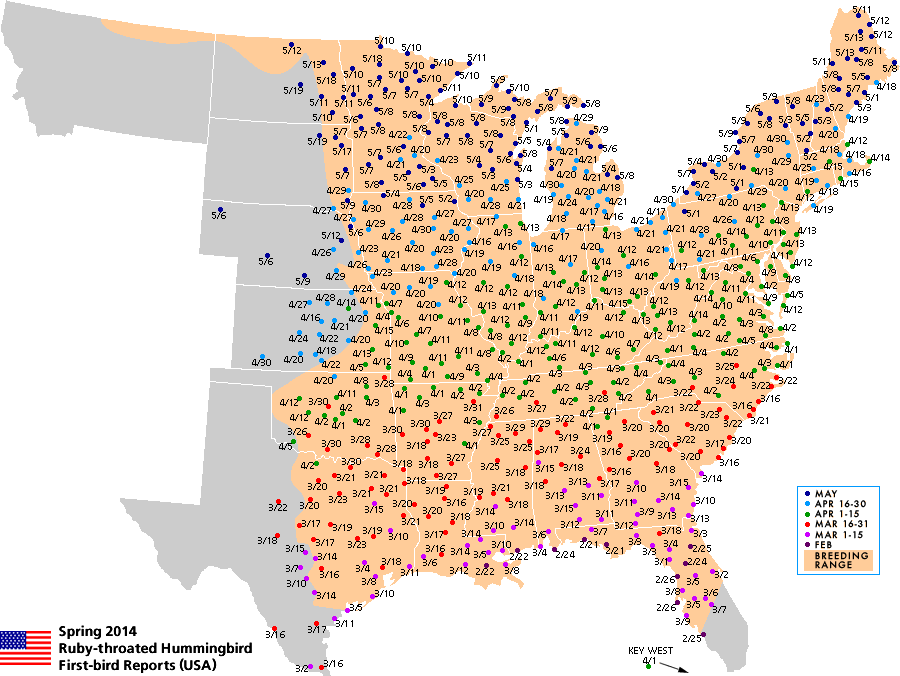Ruby-Throated Hummingbird Sightings and vegetation.
Credit: NASA Earth Observatory
Okay, NASA does have some pretty powerful satellites, but they can’t identify hummingbirds from space just yet.
Every year in March, the first ruby-throated hummingbirds arrive in Gulf Coast states from their wintering grounds in Central America. Fattened on insects, the tiny birds fly 500 miles across the Gulf of Mexico and arrive in the United States hungry for nectar from early spring flowers. As spring progresses into summer, the birds follow maturing vegetation northward into the eastern United States and Canada. During this journey north, students across the country track the birds’ progress. When a student sees a bird, he or she records the sighting. Teachers report their students’ sightings to the Journey North web page, where it is logged on a map. At the end of the week, Journey North staff members review the sightings and publish a weekly summary.
The dots on this image mark student sightings of the first adult ruby-throated hummingbirds of the spring 2007 migration. White dots indicate confirmed sightings prior to March 15, while the purple dots show sightings reported (but not yet confirmed) between March 15 and March 19. The earlier sightings are along the southern coast, where the birds first come ashore after crossing the Gulf. The northernmost sightings are the most recent records. The birds are clearly concentrated in the areas that have started to green up, where nectar-laden flowers would be available. New vegetation is only beginning to reach the northern section of the image, and as a consequence, the birds have yet to migrate to those areas.
On her blog Burning Silo, Bev Wigney noted on March 16, an equivalent effort, the Hummingbird Migration Project:
As of today, both efforts have recorded sightings as far north as South Carolina on the Atlantic seaboard, and far western Tennessee along the Mississippi. By the end of the summer, Ruby-Throated Hummingbirds will make their way to New York City and Long Island. My trumpet honeysuckle and scarlet runner beans will be waiting for them.

